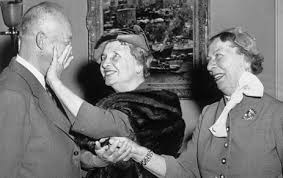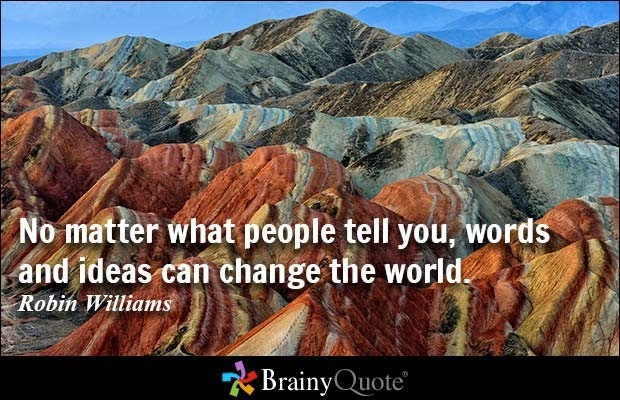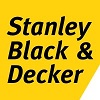The Sensational Language of Engagement

This blog (first appeared on Therapists site April/2016) is dedicated to Gretchen Schmelzer whose work has often inspired me. Her more recent blog, The ‘Water’ Moments of Healing, enabled me to fine tune how I experience language.
In my work as a Creative Arts Therapist I have often communicated that creativity is our “mother tongue”, our innate non-verbal, and sensory based language through which we express and communicate our thoughts and feelings. I also have discussed how, as my approach is established in developmental psychology, I see that our coming into this world is experienced in the paradox described by D. W. Winnicott. Winnicott, a pediatrician and psychoanalyst, developed the theoretical concept of a “holding” environment: an environment that allows you to safely feel taken care of, protected, understood, accepted unconditionally, and held in such a way that your consciousness which, at the beginning of human development is unformed, fluid, and changeable, can grow spontaneously and naturally on its own. (Excerpt from The Holding Environment)
The paradox that is created as a result of this theoretical concept is:
In order for an infant to develop a sense of self as independent from others, it is dependent on the other to provide the environment in which to develop this sense.
And I use the word “sense” literally. We are sensory beings. As the amniotic fluid is a greater sound carrier than water, our sensory environment begins in utero:
“Perhaps the most significant [sound] a baby hears in utero is his mother’s voice. Around the seventh and eighth month, a fetus’s heart rate slows down slightly whenever his mother is speaking, indicating that mom’s voice has a calming effect. By the time they’re born, babies can actually recognize their mother’s voice.”
After birth, our experiences continue to be shaped, formed and influenced by what we hear, see, smell, taste, touch, as well as experience proprioceptively and vestibularly. Our Central Nervous System is continuously perceiving, sorting, choosing and responding to information received through our sensory system. Over the years, we collect and store these experiences. We construct and form memories. And these memories are based on the type or lack of engagement between the self, the other and the environment.
“Alone we can do so little; together we can do so much.” – Helen Keller
The bridge from non-verbal to verbal.
Schmelzer writes; “In the story, [Helen Keller’s autobiography, “The Story of my Life.”] Helen, who loses her sight and hearing as a toddler from Scarlet Fever, is lost in her own world. She rages and fights and struggles to make herself understood, and she can’t connect to the world around her. She has experiences, she has feelings, she has sensations—but no way to put these things in to a language. And then Annie comes along and begins to teach her that each thing in the world is paired with a word.”“In the story, [Helen Keller’s autobiography, “The Story of my Life.”] Helen, who loses her sight and hearing as a toddler from Scarlet Fever, is lost in her own world. She rages and fights and struggles to make herself understood, and she can’t connect to the world around her. She has experiences, she has feelings, she has sensations—but no way to put these things in to a language. And then Annie comes along and begins to teach her that each thing in the world is paired with a word.”
This is a beautifully written depiction of the powerful discovery of language that connects object to thought and feeling. Its non-verbal source, however, comes from the engagement with the other. Annie Sullivan’s hands, spelling into Helen Keller’s hands and Sullivan placing Keller’s hand on Sullivan’s mouth, enabled the sensory experience to be transformed into a verbal language.
The beginning of this type of engagement with Annie Sullivan led to Hellen Keller’s full engagement with others and her world; internally and externally, literally, symbolically and metaphorically.
Storytelling, another language of engagement.
The act of storytelling is a central part of who we are. Stories help make sense of our world and our place in it and we define ourselves by a story within time. We create stories; verbally, oral and written, and non-verbally, through movement/dance, visual symbols and signs/visual arts, and sound making/music. Where there is life, in any form, there is communication. But only humans tell stories.
Helen Keller wrote:
“Literature is my Utopia. Here I am not disenfranchised. No barrier of the senses shuts me out from the sweet, gracious discourses of my book friends. They talk to me without embarrassment or awkwardness.”
We discover our self through the engagement with the other, through our communication with the other and through the sensory language of engagement. The experience of discovery is a creative one and so Winnicott brings it back full circle when he states:
“It is only in being creative that the individual discovers the self.”
Articles from Sara Jacobovici
View blog
Welcome to Wednesday Word(s) of the Week at beBee: WWW.beBee · My contribution for this week is · a ...

Image credit: steveoatesblog - WordPress.com · With Q&A@beBee, I ask some of the most interesting pe ...

I am sure you can relate to my experiences of being drawn into dynamic posts and discussions. It is ...
Related professionals
You may be interested in these jobs
-

Dishwashers,cleaners,handymen in the kitchen
Found in: beBee S2 IL - 2 days ago
Restaurant Tel Aviv Tel Aviv, Holon, Israel FreelanceТель Авив · Холон · Требуются РАБОТНИКИ В РЕСТОРАН: · посудомойщики · уборщики · разнорабочие на кухню · Режим работы: · Утренняя смена с 10:00-22:00 · Дневная смена 14:00-24:00 · Контакты и вопросы по трудоустройству · Звонить Елена) · WhatsApp Валерий) · Tel Aviv · Holon · EM ...
-

Application Engineer
Found in: beBee S2 IL - 5 days ago
Siemens Digital Industries Software Herzliya, Israel Paid WorkJob Family: Sales · Req ID: 413271 · About us · Siemens Digital Industries Software - Transform the everyday · Let's make the difference together · Meet the team - Video ) · Siemens EDA is a global technology leader in Electronic Design Automation software. Our software tools ena ...
-
raw material staff
Found in: Appcast US A2 ECP - 2 days ago
Stanley Black & Decker Migdal HaEmek, Israel Full timeraw material staff · We Don't Just Build The World, We Build Innovative Technology Too. · Joining the Stanley Black & Decker team means working in an innovative, tech-driven and highly collaborative team environment supported by over 58,000 professionals in 60 countries across t ...

Comments
Sara Jacobovici
7 years ago #10
Thank you Deb Lange. Looking forward to the publication of your book. Very exciting and wishing you all the success! Re safe holding space, from my perspective, we internalize that original space and spend all our lives either sustaining it or modifying it. In my discussions with Irene Hackett I have expressed that I am beginning to think that the space referred to by Viktor Frankl when he says, "Between stimulus and response there is a space. In that space is our power to choose our response. In our response lies our growth and our freedom.", is connected to our original space.
Sara Jacobovici
7 years ago #9
Thank you Deb Helfrich. Your thoughts and insights always add value to the discussion.
Sara Jacobovici
7 years ago #8
I have started to refer to this as a triad only after your writing about triads Ali Anani.
Sara Jacobovici
7 years ago #7
Agreed Aurorasa Sima. I have a Hive https://www.bebee.com/group/defining-creativity because I am very interested in this topic and I do believe that there are different ways for us to express our creativity. It's interesting that today there is a title of Creative in the corporate world. (That's another story.) My premise is that we are made up of the triad; we are a sensory being, a conscious being and a creative being. I often say that adaptation is one of our most creative abilities. I do look forward to putting some thoughts down. Hope it comes out OK. Thanks Aurorasa.
Sara Jacobovici
7 years ago #6
Great contribution to this discussion CityVP Manjit. You make the right connections in the right way.
Sara Jacobovici
7 years ago #5
Thank you Aurorasa Sima for your comment and your challenge. I hope I can succeed in meeting that challenge.
CityVP Manjit
7 years ago #4
Sara Jacobovici
7 years ago #3
I am looking forward to your next work(s) Ali Anani that will include an answer to your question. In anticipation, my gut reaction is to say that all life forms must have a built in reaction to threats. Would not this be considered fearful?
Sara Jacobovici
7 years ago #2
Wonderful to "hear" you thinking Ali Anani. You expand the concepts in the discussion and you ask questions that lead to more thinking. You write, "The distorted senses may lead to patterns of repeated behaviors." Couldn't agree more. When the child is developing, his or her senses are what provides meaning. Only later does the child begin to "think". Yet because these sensory experiences are pre-verbal and pre-cognitive developmentally, the behaviours stay on as patterns, as you say. Only an awareness, a conscious understanding of what we are doing and exploring the why, will lead to change.
Sara Jacobovici
7 years ago #1
Thank you David Navarro L\u00f3pez for your comment and your link. I just finished reading your Buzz and commented. What you call an "Oxymoron", I call a paradox. For me the difference is that in a paradox both states exist at the same time while an oxymoron cancels each state/other out. What makes Winnicott's holding environment so potentially successful is that it blends the caregivers qualities of holding and allowing. There is no "doing" for the child or letting the child do whatever he or she wants. It is an integrated environment as opposed to the "theory of the day" parenting or where has the pendulum swung; discipline or "freedom". You are obviously a caring and aware individual and parent David. My sense is that you have the main factor needed in this discussion, a big heart!